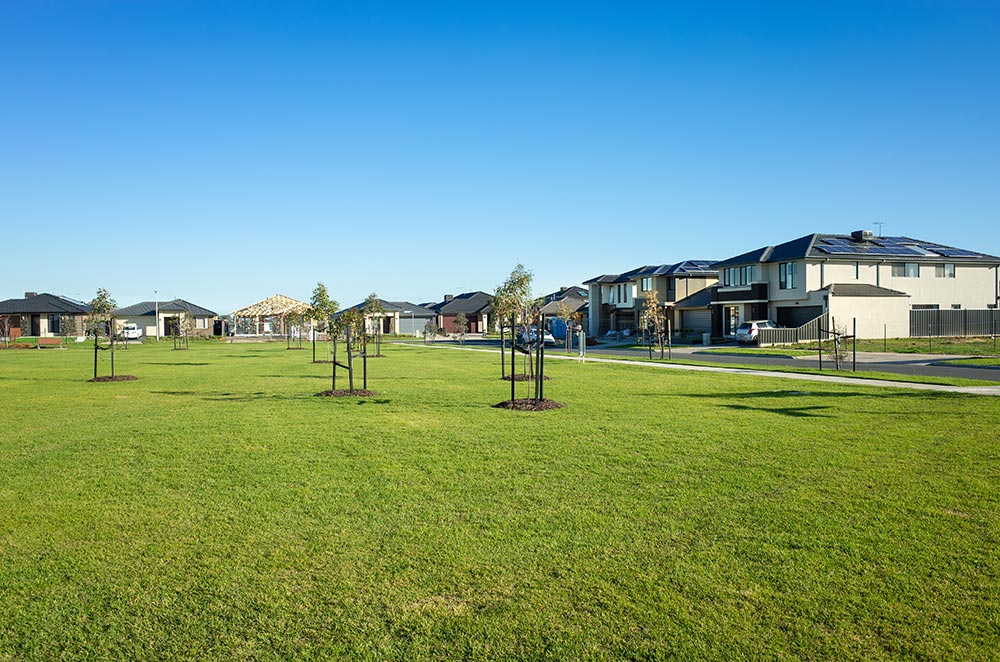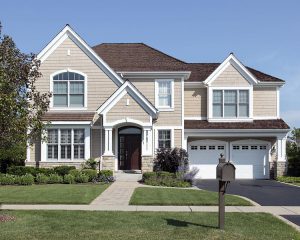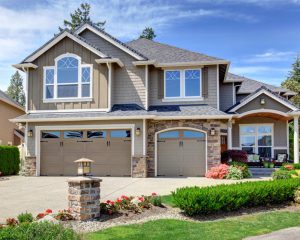Navigating the housing market can be a frustrating endeavor and if you’ve been dreaming of a custom home build, now might be the best time to act. From choosing the perfect floor plan to selecting the right finishes, building a custom home allows you to create a space that truly reflects your personality and lifestyle. However, before you can start building your dream home, you need to find the right property. Selecting the perfect piece of land can be challenging, as there are many factors to think about. To help, consider the following nine tips for buying property for your custom home build.
1. Decide How Much Land You Need
The first thing you’ll need to do is think about how much land you’ll actually need for your custom home build. Do you have a desired size in mind or are you flexible? Do you want to have a large yard, or is a small exterior enough for your dream build? These are important questions to think about, as you can’t make your lot bigger once you buy it.
With the rise of residential developments, vacant land may not be as easy to come by as you think, so it’s essential to hash out these details from the start. Working with a professional custom home builder can help with this process, as they tend to have access to a larger directory of plots.
2. Consider the Location and Surroundings
Another tip for purchasing your property is to check out the location before making an offer. You’ll want to make sure that your custom home is being built in a neighborhood you love, with surrounding amenities that fit your lifestyle and future plans. To help with this process, spend some time researching the surrounding school districts, hospitals or health network, shopping centers, gyms, or anything else that’s important to you. You may also want to spend a little time researching the value of nearby homes, as this can help give you some insight regarding your long-term investment.
3. Look at Zoning and Building Regulations
Next, consider the zoning and building regulations for each prospective lot. Zoning is often set in place by a local authority and can dictate what your land can and cannot be used for. Zoning regulations may also include restrictions to building size and shape for each property, so getting information on these ahead of time can help you avoid running into any issues. Take the time to identify any and all potential restrictions that could limit your custom home design. You should also verify whether the property is within a homeowner association and, if so, what its regulations are.
4. Check the Topography and Soil Quality
You’ll also need to hire someone to examine the topography of the property to determine if it’s suitable for your luxury home design. Soil quality should also be tested. This is done to ensure that a plot of land can support your home’s foundation and drainage once constructed. The stability of your home will be dependent on the foundation on which it’s built. If the soil quality is poor or the topography is unstable, the building may experience settling or shifting, leading to structural issues.
Topography and soil quality can also affect the way water drains around the home. If the property is situated in an area with poor drainage, water can accumulate around the foundation, leading to water damage and potential flooding. Grading and excavating is possible, but it’s usually easier to work with something that’s ready for building.
5. Research Utilities and Services
Before building a home, it’s essential to ensure that the property has access to basic services such as water, electricity, and gas. However, raw or undeveloped land may not have the same access to utility hookups as developed properties, so it’s important to check this ahead of time. Ideally, you’ll want water, electricity, gas, and sewage connections easily accessible for your property. If they’re not, you’ll need to install them before any building can take place, which can drastically increase costs.
6. Weigh Different Environmental Factors
Some regions have more severe weather, so it’s essential to consider different environmental factors and how they could affect your custom home build. For example, if you live in a region that’s prone to hurricanes or tornadoes, you may need to adhere to special building techniques that can withstand high winds. If you live in an area prone to flooding, you may need to build on elevated land or undergo additional soil tests for long-term stability. Finally, some locations may be in areas with protected wildlife habitats, which can affect your custom home building process. Always take the time to fully understand any environmental factors that could impact your build prior to making a decision.
7. Review the Property Condition and History
One of the main reasons you’ll want to review property condition and history is cost of construction. As mentioned, there are several conditions that can significantly affect the cost of site preparation and building. Safety concerns are also important to consider, as the property history can reveal potential risks, such as flood or erosion hazards, which may affect the design and construction of the home. Property history could also reveal potential environmental risks or contamination issues that require a special approach to mitigate the problem.
A property in a desirable location or with a history of high property values can increase the future value of the home, while a property with a history of poor conditions or low property values may decrease its future value. In general, reviewing the property condition and history can help ensure that your custom home is built safely, sustainably, and in compliance with all relevant regulations and legal requirements.
8. Find a Reputable Custom Home Builder
Finding a reputable custom home builder can be a challenging task, but there are several steps you can take to help ensure that you choose the right builder for your needs. Always start by asking for recommendations from friends, family members, coworkers, or even local real estate agents. You can also look for builders online, read reviews and ratings from previous customers, and check their portfolio of earlier work.
Once you have a list of potential builders, check their credentials, and ensure they have the necessary licenses and certifications required in your area. You can also check their professional affiliations, such as membership in a local builder’s association, to ensure that they’re committed to high standards of quality and ethics.
Before hiring anyone, take the time to meet with your prospective custom home builder to ask questions, check compatibility, and consider their communication style. The important thing is finding someone who’s not only experienced, but who will be easy to work with and will transform your vision into a reality.
9. Explore Your Financing Options
There are several financing options available for building a custom home. One of the most common options is a construction loan, which is a short-term loan that covers the cost of building. Construction loans typically have higher interest rates and require a higher down payment than traditional mortgages, but they can supply the funding needed to cover the cost of materials and labor during the construction process.
Another financing option is a home equity loan or line of credit, which uses the equity in your existing home as collateral to secure a loan for your custom home build. Home equity loans typically have lower interest rates than construction loans, but they may not provide enough funding for the entire project cost.
A third financing choice is a personal loan, which can be used to cover the cost of building. Personal loans typically have higher interest rates than construction loans or home equity loans, but they can provide more flexibility in terms of repayment terms and loan amount.
If none of these options sound appealing, don’t worry. TradeMark Homes helps take all the stress out of building your dream home by providing in-house financing for construction from start to finish. We partner with several preferred banks who offer top quality service and fast turnaround on mortgages.
At TradeMark Homes, we make building your dream home fun, exciting, and stress free. Our team of professionals helps you through all the planning stages of building a custom home, from purchasing property to the final details. At TradeMark Homes, we help turn your vision into a reality. We also understand that the first step in building your new home begins with you. Fill out an inquiry form or call us today at 479-267-9900 to schedule a consultation, discuss your vision, and review your budget.



